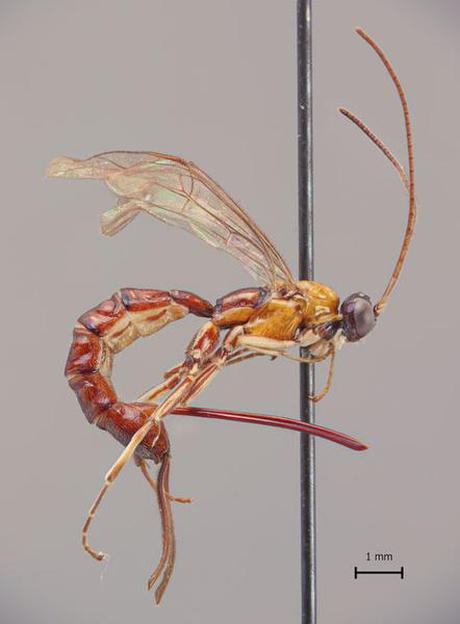Researchers have discovered seven new wasp species belonging to the genus Clistopyga from Peru, Venezuela and Colombia

The Amazon rainforests continue to throw up surprises, and this time it’s a slightly scary one. An international team of researchers have discovered seven new wasp species belonging to the genus Clistopyga from Peru, Venezuela and Colombia. A recent report published in Zootaxa describes their morphology, such as colouration, wing size and other distinct features.
The most notable among them is Clistopyga crassicaudata, named after its distinctly thickened ovipositor. The ovipositor is a tube-like organ present in many insects that helps in laying eggs and also in injecting venom. “What makes it [Clistopyga crassicaudata] especially interesting, is the size of the ovipositor. It is the only species of the species-group with a strongly widened ovipositor (apically),” said Ilari E. Sääksjärvi, Professor in Biodiversity Research at the University of Turku, Finland, in an email to The Hindu.
The researchers say that these new species could be parasitoid wasps, which lay their eggs near a host, which the larvae then feeds on and, eventually, kills. “The biology of these seven new species is really unknown but other species of this genus, and other genera of Ichneumonidae lay their eggs into spiders or egg-sacs,” explained Dr. Santiago Bordera from the University of Alicante, Spain, in an email to The Hindu. The female wasps inject venom into spiders, paralyse them, and then lay their eggs on them. The hatching larvae feed on the paralysed spiders and their eggs.
“We do not know for sure which spider this wasp species prefers. The insect we were studying [previously] ...could use its stinger as an intricate felting needle and handily close the spider’s web nest trapping the paralysed inhabitant within,” says Prof.Sääksjärvi in a press release.
The other new species include C.kalima, C. panchei and C. taironae, named in honour of Kalimas, Panches and Toiranas, indigenous tribe groups of Colombo. Another species was named C. nigriventri, indicating its entirely black body, and another C. splendida because of its multicoloured body. The seventh species, which has white and brown body, was named C.isayae in honour of the wife of Francisco Díaz, one of the authors of the paper.